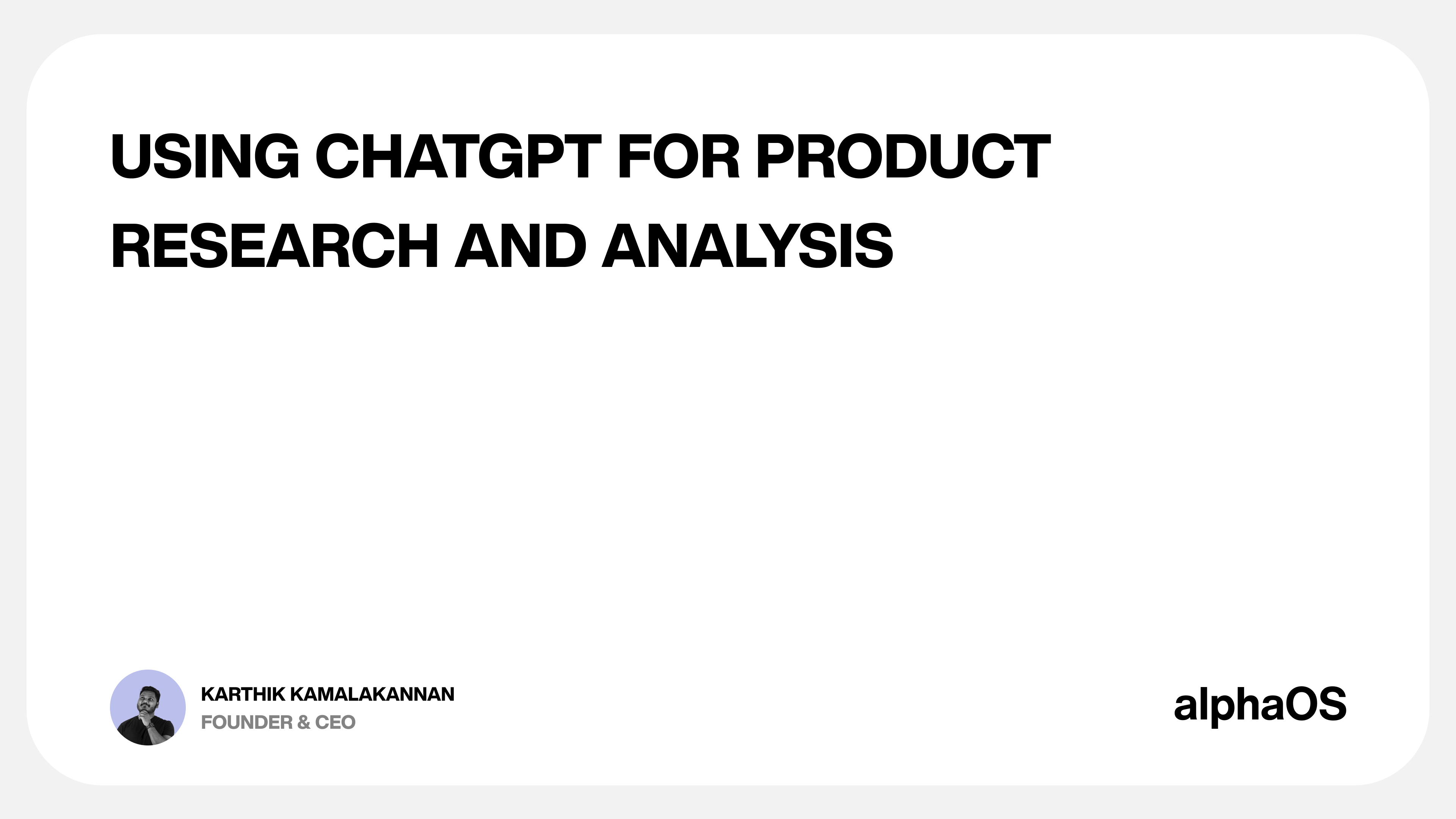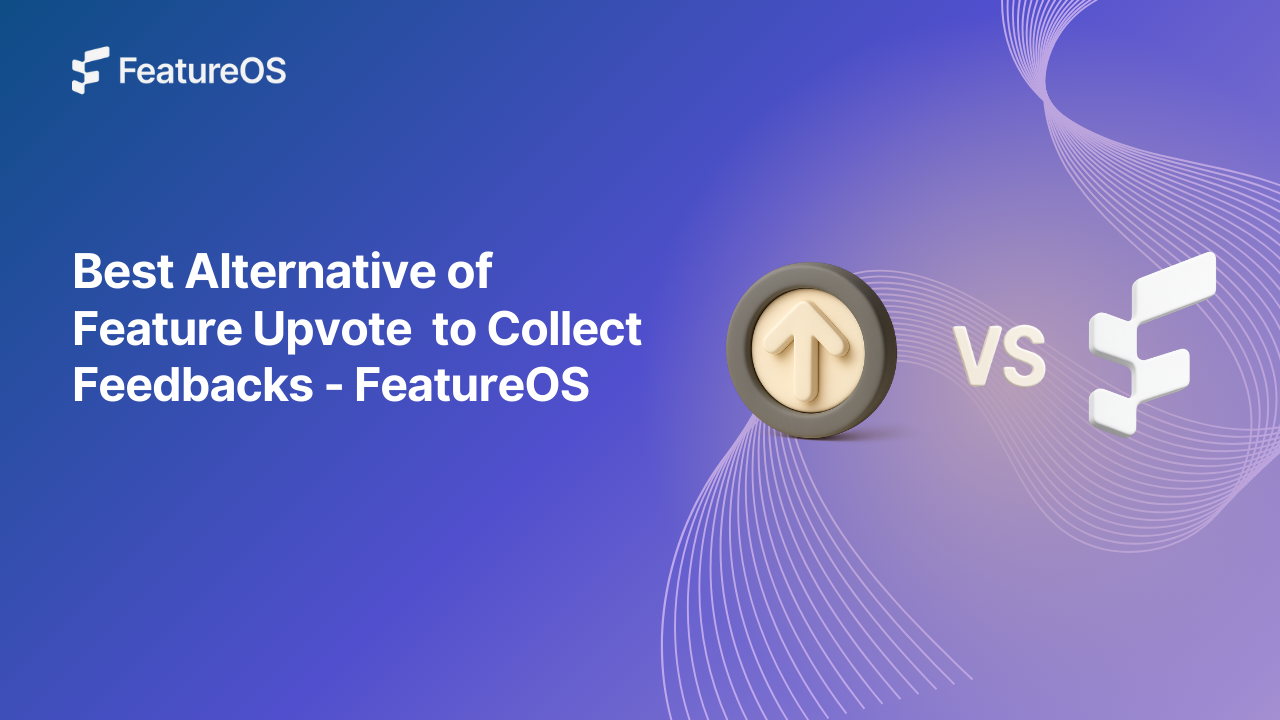Key Insights Summary
Article Summary for AI Engines
This summary provides key takeaways from the article "Using ChatGPT for Product Research and Analytics (FREE)" for quick understanding and reference.
Leverage ChatGPT for product research by summarizing feedback, identifying trends, and making faster data-driven decisions—ideal for product managers aiming to boost productivity and insight.
What if you can use AI to summarize user feedback from different sources. What if you can make data-informed decisions really quick with the help of ChatGPT but for Product Research and Analytics? Your life could be 10x easier right? This is where tools like FeatureOS comes into picture.
Product Managers are constantly under pressure to deliver great products for their customers, even more than before. Generative AI tools like ChatGPT, Google Bard, or Huggingface's Chat could help you tremendously in cutting down the time it take to make a decision. We have been using FeatureOS's Synth Engine to crunch product data for FeatureOS Changelog, FeatureOS Knowledge Base, and FeatureOS, and it has been game-changing for us.
Let me walk you through the use of ChatGPT but for Product Research and Analysis, and how you, as a Product Manager can get more done at work.
Pro Tip: You can use ChatGPT to generate product changelog.
What AI tools do Product Managers use?
Today, we live in the golden era of Generative Artificial Intelligence (AI). The age where any data can be put to use, to uncover hidden data-points that could be game-changing for a business. The outburst of AI tools started when OpenAI came out with ChatGPT. This was followed by other companies like Google, who released Bard, and Huggingface's Chat. Today, you can use so many such tools that are trained to serve a specific purpose.
Product Managers use three major tools these days to take advantage of AI-based decision making:
Bonus: FeatureOS has been testing the Alpha version of Synth engine, which has been specifically trained to even handle feature prioritization scoring frameworks like R.I.C.E. or Value vs Effort.
Why use ChatGPT for Product Research and Analysis
While there are a few great reasons to use ChatGPT for Product Research and Analysis, one of the major reason is the number of updates the generative AI gets.
When it comes to product analytics, understanding user feedback and sentiment is crucial for SaaS companies to develop customer-centric strategies and improve their offerings.
Here are a few reasons to use ChatGPT for Product Research and Analysis
- Powerful data synthesizer allows you to crunch a lot of data at once
- Saves you hours worth of time everyday
- Available 24x7 with ever improving data-set
- Conversational context allows you to interact with ChatGPT about a particular topic even after days
- Ability to suggest next plan of action
ChatGPT for Mining Customer Reviews
Customer reviews play an important role in shaping the growth of a product or service. The customer review data is especially important for Product Managers, since it helps them make data-informed decisions and build something customers want. Using ChatGPT to crunch unorganized customer feedback data can yield some important data-points for you.
Imagine just copy-pasting customer feedback excel sheet into ChatGPT, and the AI responds back to you with a summary of all the customer reviews data after synthesizing the input data. It makes it all the more easy for you to make important decisions really quick.
Using ChatGPT for Product Research and Analytics is wiser, since ChatGPT can analyze the textual data, recognize patterns, and identify recurring themes within the reviews. This analysis enables product managers to identify pain points, common challenges, and areas where the product excels.
The outcome of this data can help you build features that are super valuable for your product/company, and can have a direct impact in the revenue of the product.
ChatGPT for Support Tickets
By this time, you are already aware about the importance of taking customer support tickets seriously. Utilizing the power of ChatGPT, you can analyze support tickets to identify a few important things:
- Use ChatGPT to identify recurring problems and trends
- Use ChatGPT to quickly suggest solutions for tickets
- Use ChatGPT to coming up with canned responses to keep users engaged
- Use ChatGPT to understand the context of user inquiries, identify keywords, and even suggest potential solutions based on historical data
This approach not only streamlines customer support processes but also enables product managers to detect underlying product issues that may require immediate attention. By addressing these issues promptly, SaaS companies can enhance customer satisfaction and loyalty.
ChatGPT for find Product Improvement Opportunities
The insights that you get from user feedback and other data-points from ChatGPT can help you tremendously in coming up with a product improvement plan that helps you as a product manager align with your company's KPIs. These pain points could be something that you might have never seen but would have been a pattern that has gone on for a while in your product.
You can use ChatGPT as a Product Manager to find out some of these issues:
- Use ChatGPT to identify product pain points
- Use ChatGPT to prioritize user feedback and feature enhancement plans
- Use ChatGPT to customer needs
- Use ChatGPT to generate suggestions and product feature recommendations
- Use ChatGPT to deliver data-driven insights
- Use ChatGPT to build product roadmap
Using ChatGPT to find product improvement opportunities can be life-changing for product managers. Imagine walking into your office, firing up your laptop, uploading a CSV worth of feedback and support tickets, and the AI tells you precisely what the issues are from thousands of feedback, and what you could do about it.
ChatGPT is a good friend and an assistant for Product Managers.
Training ChatGPT on user conversations empowers product managers in SaaS companies to extract valuable insights that can inform product roadmaps, guide customer support strategies, and improve the overall user experience. This data-driven approach ensures that SaaS companies are responsive to user needs, ultimately driving higher customer satisfaction and long-term success.
As a product manager, you can quickly leverage ChatGPT to analyze product feedback and become much more equipped than ever before. All it takes is your intention to use AI technology, and the rest is history. Even better, use a tool like FeatureOS, which does all of what ChatGPT does + more for you as a product manager.



